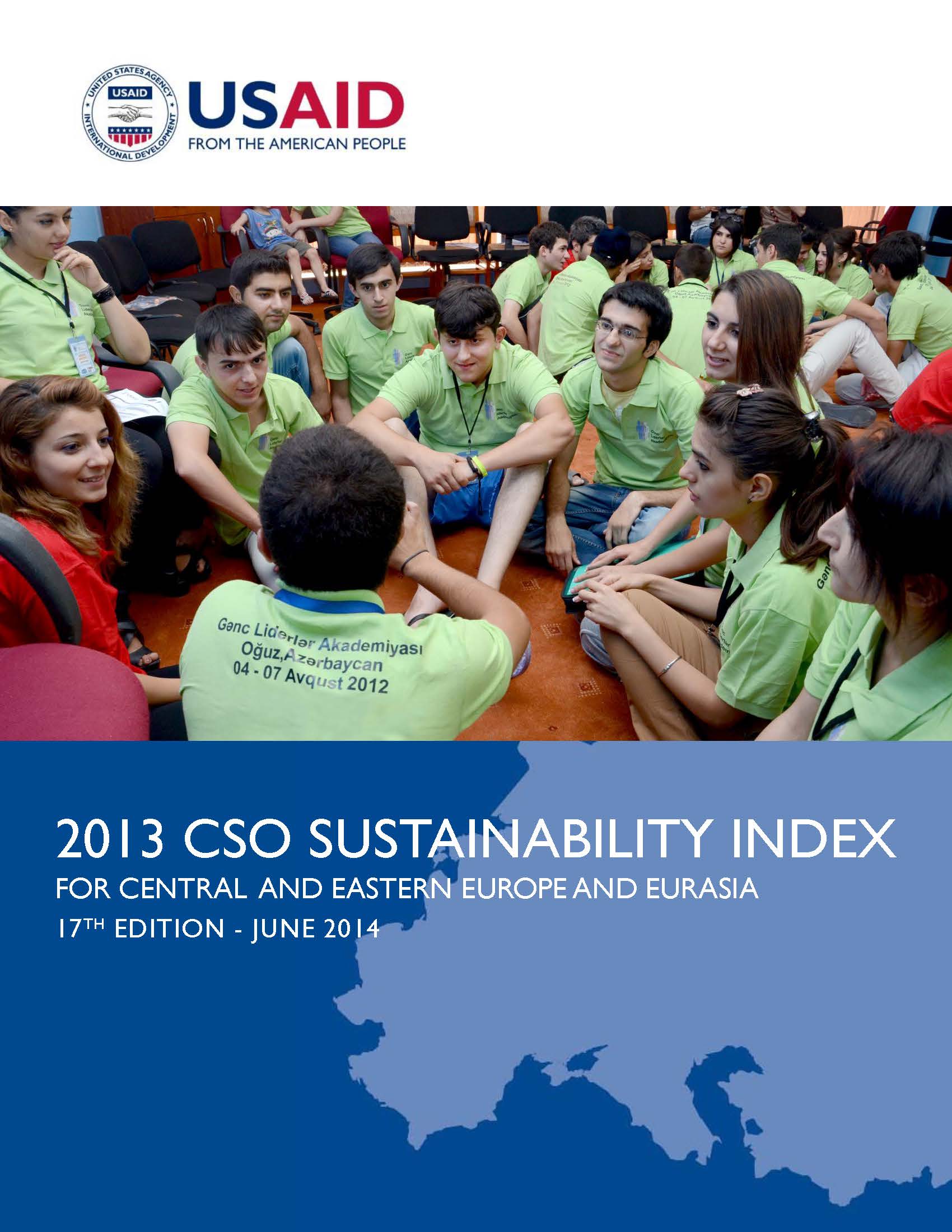- What We Do
- Agriculture and Food Security
- Democracy, Human Rights and Governance
- Democracy, Human Rights and Governance Strategy
- Supporting Free and Fair Elections
- Supporting Vibrant Civil Society & Independent Media
- Protecting Human Rights
- Promoting Accountability & Transparency
- Importance of Democracy, Human Rights, & Governance to Development
- Countering Trafficking in Persons
- Economic Growth and Trade
- Education
- Ending Extreme Poverty
- Environment and Global Climate Change
- Gender Equality and Women's Empowerment
- Global Health
- Water and Sanitation
- Working in Crises and Conflict
- U.S. Global Development Lab
CSO Sector Development In 2013
Civil society organizations in Europe and Eurasia are generally benefitting from increased levels of citizen participation, and their prominence is increasingly prompting governments to look at them more closely, according to the latest version of USAID’s Civil Society Organization Sustainability Index (CSOSI). This year’s CSO Sustainability Index also shows that the countries in Europe and Eurasia continued to move on different trajectories in 2013. While some countries increasingly involved citizens in policy making, others sought to close space for civic activity. The year 2013 was marked by new or strengthened trends, ranging from a new surge of civil society demanding their voices be heard, to adoption of new legislation that more closely regulates or enables civil society, and to introduction of new mechanisms to institutionalize citizen participation in policy development. Although the civil society sector in the region has far to go until it is sustainable everywhere, citizens continued to organize themselves to demand more accountable, transparent, and effective government. The civil society sector also shows growing strength and maturity in many countries of the region.
Background
The Civil Society Organization Sustainability Index (CSOSI) has been used since 1997 to assess the sustainability of the CSO sector. The Index has expanded considerably since its inception – it went from covering 18 countries in the Europe and Eurasia Region, to covering over 60 countries in different regions around the world. By using standard indicators and collecting data each year, the CSOSI enables users to track developments and identify trends in the CSO sector over time while allowing for cross-country and cross-region comparison. It is used by CSO advocates, development partners, and academics to assess international and regional trends in the civil society sector and to identify common obstacles impeding the sector's sustainability, such as the legal environment, organizational capacity, and financial viability.
Approach
The Index measures the sustainability of each country's CSO sector based on the CSOSI's seven dimensions: legal environment, organizational capacity, financial viability, advocacy, service provision, infrastructure, and public image. The CSOSI's local implementing partners in each country lead the process of organizing and convening a diverse and representative panel of CSO experts. Country panels discuss the seven dimensions for the year being assessed, and reach consensus on the scores corresponding to each dimension. With the information provided by the expert panel along with desk research, the CSO implementing partner then develops a narrative report.








Comment
Make a general inquiry or suggest an improvement.